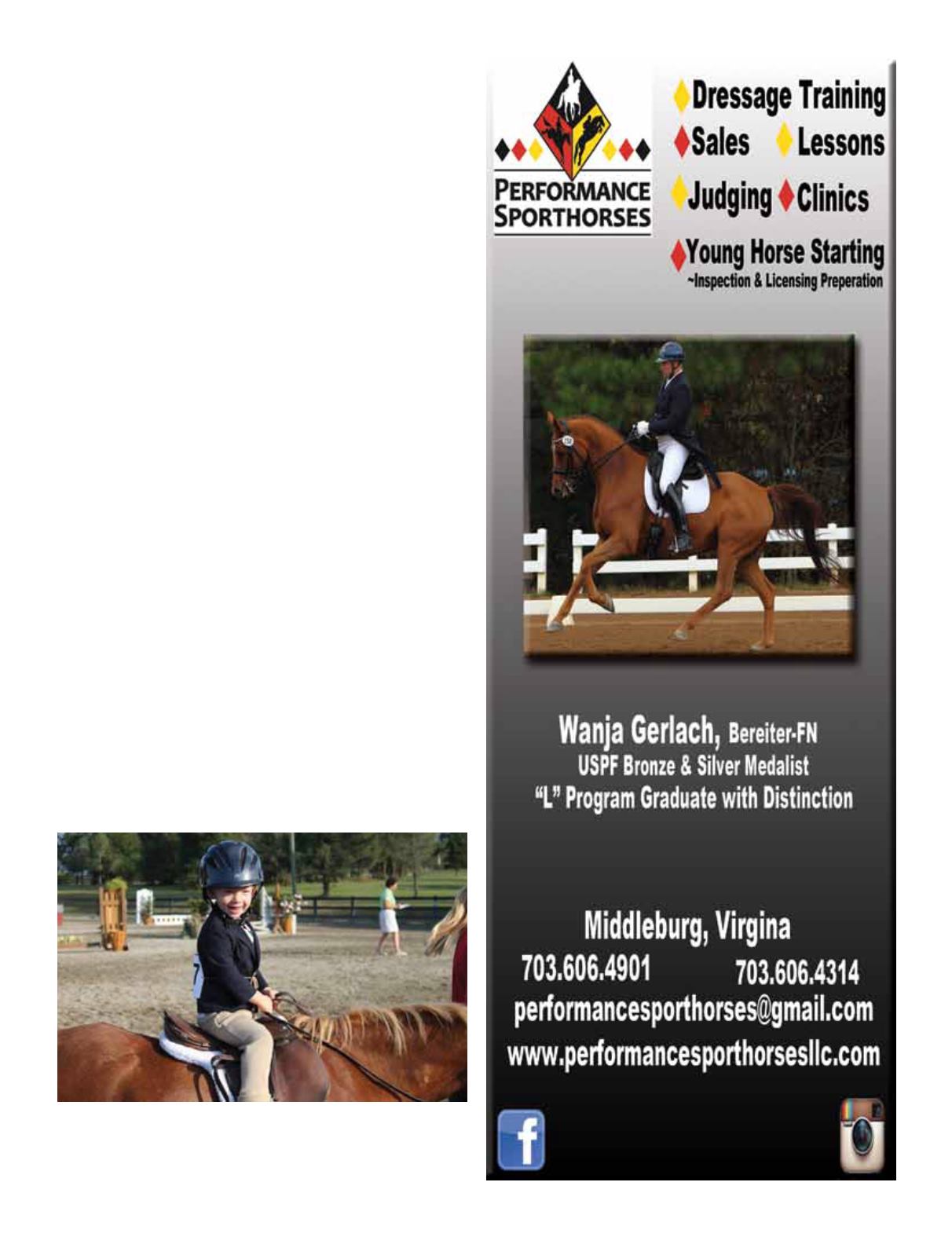
FORHORSEPEOPLE • ABOUTHORSEPEOPLE
SIDELINES JUNE 2014 99
approach to training. “Thisbackgroundgives theproper foundation
and explains how the horse should be prepared, 1-2-3, up the
levels,” he stated. “The systemexplains that you cannot leaveout
one of those levels in a horse’s life, but the horse tells youwhen
he’s ready tomoveon to thenext step. It takes as longas it takes
tomove up the levels.”
AMove to theUSA
Although Wanja’s parents weren’t professional trainers, they
bought and bred ponies for him and his sisters, so he grew up
training, riding and showing nearly everyweekend.
Following an apprenticeship and college, Wanja completed
his Bereiter license in 2004. (The title of Bereiter is earned by
participating in an accreditation system through the German
National Federation). Early jobs included preparing horses for
auctions and the Bundeschampionat (German young horse
championships).
His formal education and ability to bring out the best in young
horses earnedhiman invitation to rideat the200970-day stallion
test atSilverCreekFarm inOklahoma.He impressedasuccessful
American breeder and she quickly hired him to train at her facility
inMiddleburg.
Word spread about the 26-year-old German’s skill with the
horses and their people, and soon he had a group of dedicated
horse people under his tutelage. These owners were different
from those he worked for in Europe. “In Germany, you get the
horse [in training] and once in a while you get an email or a call
[from the owner]. Here, owners watchme ride or take the horses
for a hack. People here enjoy the whole process – the route to
success and the success itself,” he said.
MarePerformanceTesting
Even as his business has grown, Wanja has continued to be
involved with North American breeders and serves as one of
the evaluation riders for the German Oldenburg Verband (GOV)
mare performance testing. This process helps breeders evaluate
a mare’s pluses and minuses, and has grown tremendously in
recent years.
Manymaresare3-4yearsof ageandhaveas littleas12weeks
under saddle when Wanja takes his turn in the stirrups as the
guest evaluator of rideability. “You don’t get any time to get to
know the horse,” he explained. “You must make the chemistry
work the first moment you get on. A 4-year-old should step into
the contact at walk, trot and canter.” After his short ride he offers
Wanja andMelissa’s 3-year-old son, Stefan, has taken to
the family business. “He’s ahorse crazy kid. He notices the
difference between piaffe and passage, so he ridesWanja’s
small tour horse,”Melissa said.
Continuedon page 107


